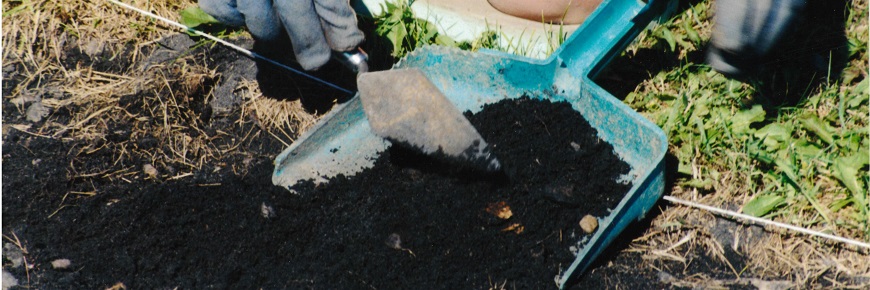
Archaeology
Fort St. Joseph National Historic Site
What is Archaeology? The study of past human life and culture by the recovery and examination of remaining material evidence such as buildings, tools, personal items, food remains, and any other physical evidence that is left behind.
Archaeologists must record everything they find by drawing plans, taking photographs and writing detailed notes. The artifacts that are found during a dig are clues to life at the site. Without proper documentation, artifacts lose much of their historic value. Additionally, once an archaeological site has been excavated it can never be put back to how it was. After the excavation is complete, archaeologists analyze all their notes, data, and artifacts, as well as doing more research into the known historical record, to put together an idea of what the site looked like, who used it, and what it was used for. The whole process can take years!
Why do we do archaeology at the Fort?
At sites like Fort St. Joseph, there are maps, plans, artwork and official correspondence, as well as personal journals and letters that provide a lot of information about what the Fort looked like and the lives of the people who lived and worked here. But those documents don’t tell the whole story. Not every planned building was constructed, and not every constructed building was put on a plan. There were many people here who didn’t leave any written notes about their lives. Archaeology helps fill in some of those gaps in the written record, and in some cases will provide surprising contradictions! Using a variety of resources allows us to piece together a more complete story.
Most of the archaeology that has been done at Fort St. Joseph took place in the 1960s and 1970s. During this period, the Fort’s palisade wall was investigated and the main buildings inside the Fort were excavated. Work was also done on some areas outside the Fort walls in the surrounding historic community. In addition, archaeologists have surveyed and identified even more archaeological remains on Rains Point and LaPointe Point. In short, no matter where you go on the grounds of Fort St. Joseph National Historic Site, you’re walking on history! Since the 1970s, there have been occasional “digs” to check out specific areas of the site, the most recent in the early 2000s, but there are not currently any excavations happening.
To date, only a small fraction of the entire archaeological site has been excavated. It is important to continue to preserve the archaeological resource for future research opportunities, when technological changes and new approaches to the science may allow us to learn things we would only dream of today.
Related links
- Date modified :